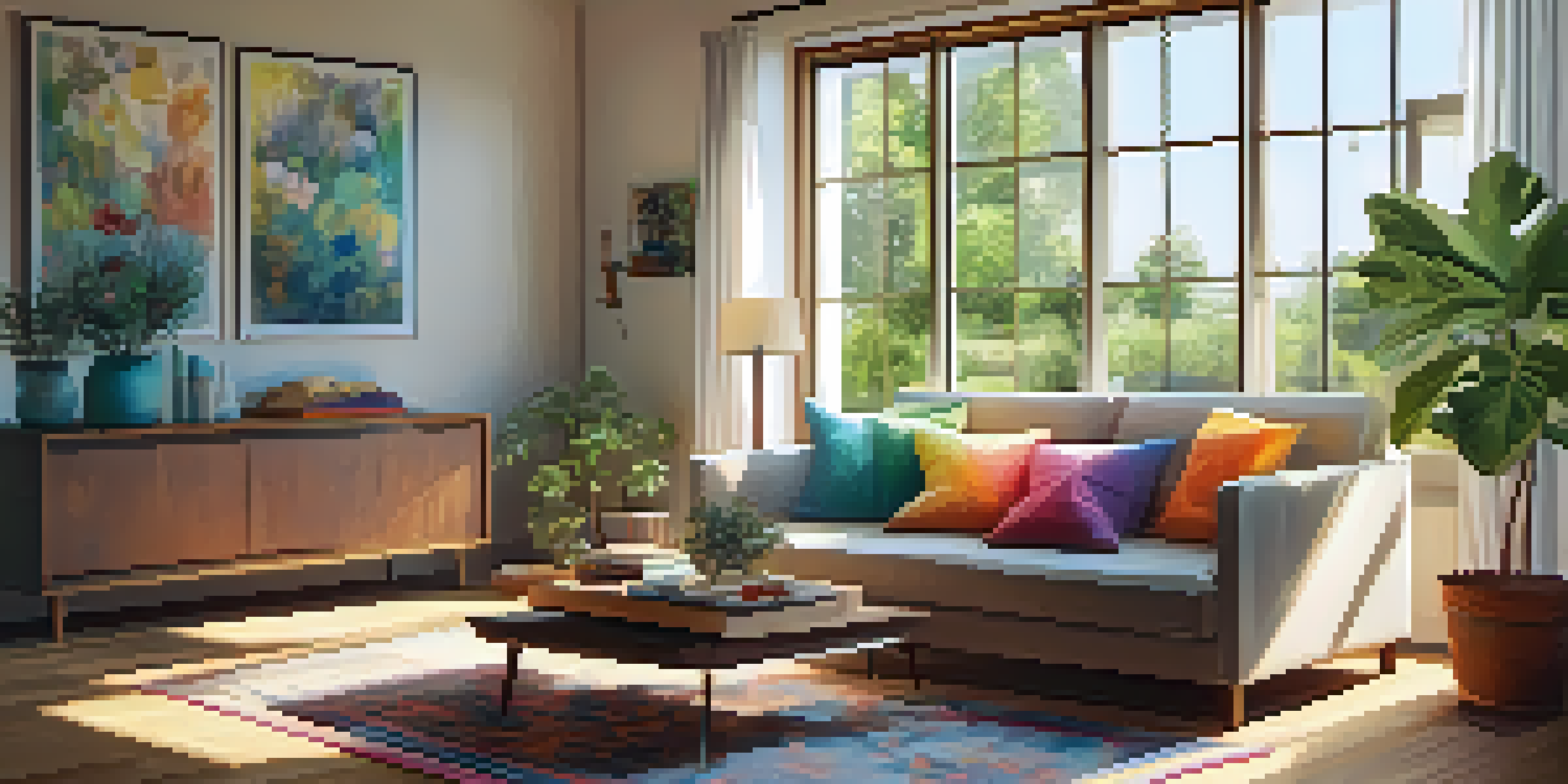Virtual Home Tours: Changing the Home Buying Experience

What Are Virtual Home Tours and How Do They Work?
Virtual home tours are digital walkthroughs of properties that allow potential buyers to explore homes from the comfort of their own couch. Using 360-degree technology, these tours provide an immersive experience, showcasing every nook and cranny as if you were physically there. It's like taking a stroll through the house without leaving your living room, which can be especially helpful for busy individuals or those relocating from afar.
Technology is best when it brings people together.
Typically, these tours are created using high-quality cameras and software that stitch together images into a seamless presentation. Some tours even include interactive features like clickable hotspots that provide additional information about specific rooms or amenities. This makes the experience not only visually engaging but also informative, giving buyers a comprehensive understanding of the property.
As technology advances, virtual home tours are becoming more prevalent and sophisticated. They can now include features such as virtual reality (VR) compatibility, allowing users to don a headset and feel truly immersed in the space. This evolution is making the home buying process more dynamic and accessible than ever before.
The Benefits of Virtual Home Tours for Buyers
One of the biggest advantages of virtual home tours is the convenience they offer. Buyers can view multiple properties without the hassle of scheduling in-person visits, saving both time and effort. Imagine being able to tour ten homes in a single afternoon, all from your couch – that's the power of virtual tours.

Additionally, virtual tours allow buyers to revisit properties at their own pace. This means they can take their time to really absorb the details, whether it's visualizing how their furniture would fit in a living room or assessing the flow of the home. This level of exploration is often hard to achieve during a traditional showing where time is limited.
Convenience of Virtual Home Tours
Virtual home tours allow buyers to explore multiple properties easily without the need for in-person visits.
Moreover, virtual tours can help buyers feel more confident in their decisions. With the ability to compare homes side by side from the comfort of home, they can make more informed choices, reducing the pressure and anxiety typically associated with house hunting.
How Sellers Benefit from Virtual Home Tours
For sellers, virtual home tours can significantly enhance the marketing of their property. High-quality tours can attract more attention online, making listings stand out in a crowded market. In a world where first impressions matter, a captivating virtual tour can be the difference between a quick sale and a property that lingers on the market.
The future belongs to those who believe in the beauty of their dreams.
Moreover, virtual tours can often lead to higher sale prices. By providing a comprehensive view of the home, sellers can showcase its best features and unique selling points, enticing buyers to make offers. This added transparency can also foster trust, as potential buyers can see exactly what they are getting.
Finally, virtual tours can help streamline the selling process. With potential buyers already having a good sense of the property from the tour, sellers may find that they receive fewer lowball offers or time-wasting inquiries. This can lead to a more efficient transaction overall, benefiting everyone involved.
The Role of Technology in Virtual Home Tours
Technology is at the heart of virtual home tours, constantly evolving to enhance user experience. From drones capturing aerial views to advanced 3D modeling software, these tools allow for an impressive representation of properties. This not only attracts buyers but also sets a new standard in real estate marketing.
Smartphone apps and easy-to-use software have made it possible for agents to create and share their own virtual tours without needing extensive technical knowledge. This democratization of technology means that even smaller agencies can compete with larger firms, leveling the playing field in the real estate market.
Enhanced Marketing for Sellers
Sellers can significantly boost their property's appeal through captivating virtual tours, attracting more potential buyers.
As augmented reality (AR) and virtual reality (VR) continue to develop, we can expect even more interactive features to emerge. Imagine walking through a virtual home and being able to change the wall colors or rearrange the furniture with a flick of your wrist – this future is closer than we think!
Challenges and Limitations of Virtual Home Tours
While virtual home tours offer numerous benefits, they are not without their challenges. One major limitation is the inability for buyers to physically experience the property. Things like smells, sounds, and the overall ambiance of a home can only be truly appreciated in person, which is something virtual tours cannot replicate.
Additionally, there can be technical issues that disrupt the viewing experience. Poor internet connections or low-quality images can lead to a frustrating experience for buyers. This is why it’s crucial for sellers and agents to invest in high-quality technology and platforms to ensure seamless virtual experiences.
Lastly, some buyers may feel overwhelmed by the sheer volume of options available through virtual tours. With so many properties accessible at the click of a button, it can be challenging to narrow down choices and focus on what truly matters. It's important for buyers to remember to take breaks and not rush the decision-making process.
How Virtual Home Tours Enhance the Marketing Strategy
Incorporating virtual home tours into a marketing strategy can create a powerful competitive advantage for real estate agents. By showcasing homes in an engaging and innovative way, agents can capture the attention of potential buyers who are scrolling through listings. A well-executed virtual tour can lead to increased inquiries and showings, boosting sales potential.
Moreover, virtual tours can easily be shared across social media platforms, amplifying reach and engagement. Imagine a stunning virtual tour shared on Instagram or Facebook – it can go viral, reaching far beyond traditional marketing methods. This modern approach not only attracts buyers but also enhances the overall brand image of the agent or agency.
Technology is Transforming Real Estate
Advancements in technology are making virtual home tours increasingly immersive and accessible, shaping the future of real estate.
Additionally, virtual tours can provide valuable analytics for agents, helping them understand viewer behavior. By tracking how long viewers spend on different sections of the tour, agents can gain insights into what features attract the most interest. This data can inform future marketing strategies and help agents tailor their approaches to better meet buyer preferences.
The Future of Virtual Home Tours in Real Estate
As the real estate landscape continues to evolve, the role of virtual home tours is only expected to grow. With advancements in technology, we may soon see even more immersive experiences, such as live guided tours or interactive elements that allow buyers to customize their viewing experience. This could open up exciting new possibilities for both buyers and sellers.
Moreover, as consumer preferences shift towards digital solutions, the demand for virtual tours will likely increase. Buyers are becoming more tech-savvy and expect modern solutions that cater to their busy lifestyles. Embracing virtual tours can help real estate professionals stay relevant and meet the needs of their clients effectively.

Ultimately, virtual home tours are not just a trend; they represent a fundamental change in how we approach home buying. As technology continues to advance, we can anticipate a future where virtual tours become a standard expectation, making the real estate market more efficient and accessible for everyone.